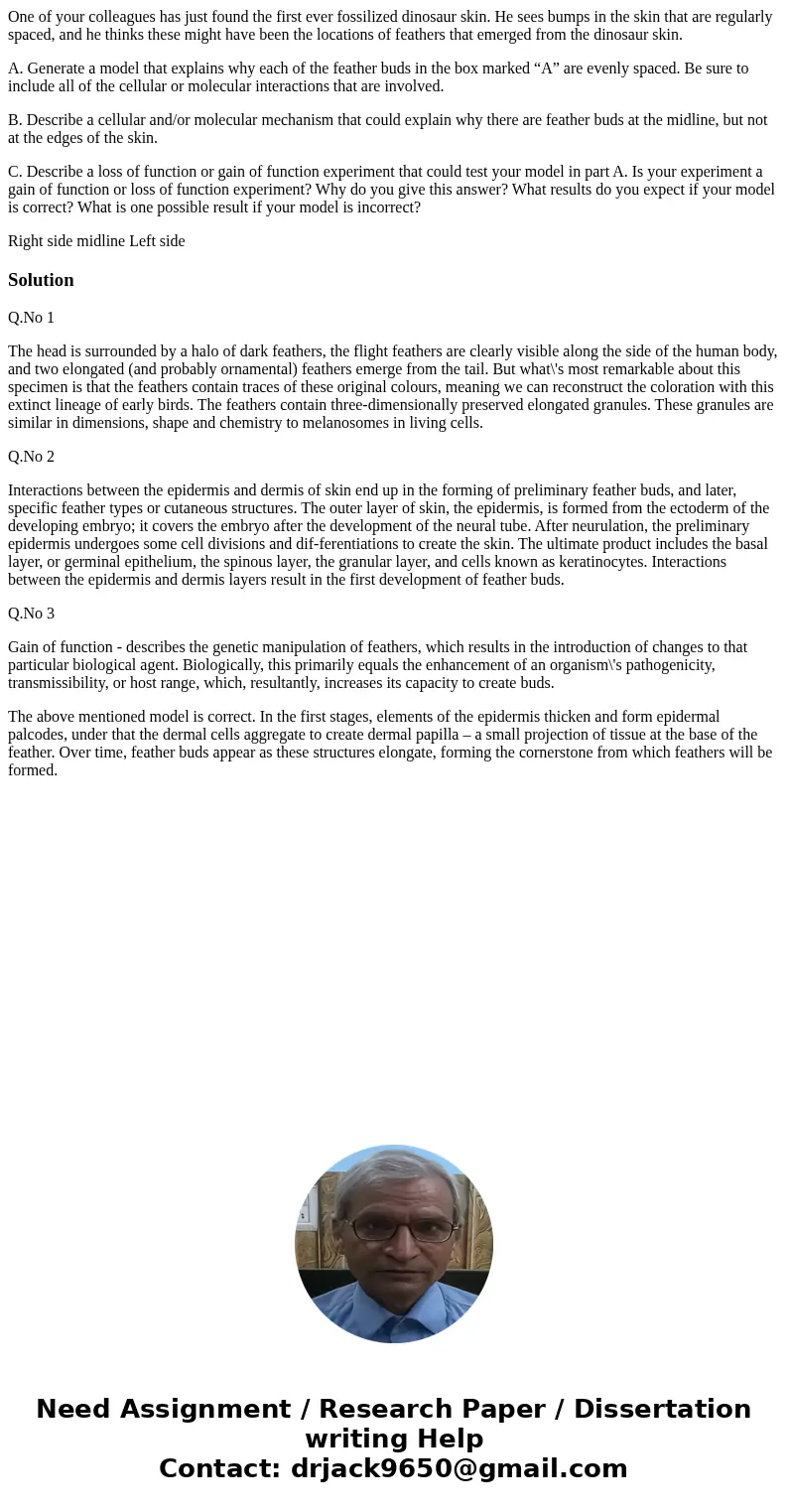One of your colleagues has just found the first ever fossili
One of your colleagues has just found the first ever fossilized dinosaur skin. He sees bumps in the skin that are regularly spaced, and he thinks these might have been the locations of feathers that emerged from the dinosaur skin.
A. Generate a model that explains why each of the feather buds in the box marked “A” are evenly spaced. Be sure to include all of the cellular or molecular interactions that are involved.
B. Describe a cellular and/or molecular mechanism that could explain why there are feather buds at the midline, but not at the edges of the skin.
C. Describe a loss of function or gain of function experiment that could test your model in part A. Is your experiment a gain of function or loss of function experiment? Why do you give this answer? What results do you expect if your model is correct? What is one possible result if your model is incorrect?
Right side midline Left sideSolution
Q.No 1
The head is surrounded by a halo of dark feathers, the flight feathers are clearly visible along the side of the human body, and two elongated (and probably ornamental) feathers emerge from the tail. But what\'s most remarkable about this specimen is that the feathers contain traces of these original colours, meaning we can reconstruct the coloration with this extinct lineage of early birds. The feathers contain three-dimensionally preserved elongated granules. These granules are similar in dimensions, shape and chemistry to melanosomes in living cells.
Q.No 2
Interactions between the epidermis and dermis of skin end up in the forming of preliminary feather buds, and later, specific feather types or cutaneous structures. The outer layer of skin, the epidermis, is formed from the ectoderm of the developing embryo; it covers the embryo after the development of the neural tube. After neurulation, the preliminary epidermis undergoes some cell divisions and dif-ferentiations to create the skin. The ultimate product includes the basal layer, or germinal epithelium, the spinous layer, the granular layer, and cells known as keratinocytes. Interactions between the epidermis and dermis layers result in the first development of feather buds.
Q.No 3
Gain of function - describes the genetic manipulation of feathers, which results in the introduction of changes to that particular biological agent. Biologically, this primarily equals the enhancement of an organism\'s pathogenicity, transmissibility, or host range, which, resultantly, increases its capacity to create buds.
The above mentioned model is correct. In the first stages, elements of the epidermis thicken and form epidermal palcodes, under that the dermal cells aggregate to create dermal papilla – a small projection of tissue at the base of the feather. Over time, feather buds appear as these structures elongate, forming the cornerstone from which feathers will be formed.

 Homework Sourse
Homework Sourse